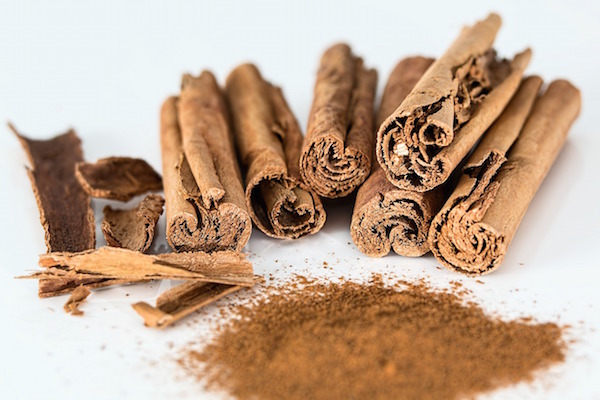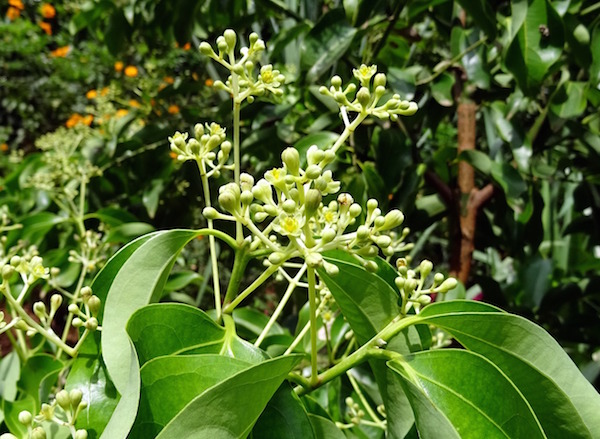Cinnamon
photo by Coleen Sullins
A visit from a flying squirrel in the evening, he waited for the cover of darkness to check out our supplies and scampered up our skis when we arrived after the sauna. He apparently likes cheese.
A visit from the daily groomer in the morning–it was too warm to set tracks but they would drag the skate lanes to break up the ice. I don’t know if he likes cheese.
photo by Coleen Sullins
Cinnamon A Helper
It’s one of those sweet and savory aromatic spices that has captivated the culinary (and medicinal) appetite for thousands of years. Native to China and southeast Asia, cinnamon made its way to ancient Egypt, then Greece, and eventually spread to Europe in the Middle Ages where its preservative qualities and seductive flavors helped create an infatuation with all things Spice among European nobility. This obsession fueled Europe’s expansion into the Spice Trade, driving their powers-that-be to search for ways to bypass Middle Eastern merchants, and reaching their long arm of domination into the far East and eventually the ‘New World’.
Like salt, the exotic spices that today we consider so commonplace had an enormous effect on shaping the politics, power, and international relations of the world.
pixabay photo
Cinnamon is the inner bark of numerous types of Cinnamomum trees, and most culinary cinnamon comes from Ceylon cinnamon (native to Sri Lanka) and Cassia cinnamon (a.k.a. Saigon cinnamon, from China and Burma). Cassia is less expensive and is more commonly found in North America. Cassia also contains higher amounts of coumarin (a toxin known to cause damage to the liver) so Ceylon would be your choice if you like to consume piles of cinnamon.
Ceylon cinnamon has generated great medicinal interest over the centuries. Cinnamon oil has potent anti-bacterial and anti-fungal properties, has been used to treat athlete’s foot, candida, infections, and used to reduce pain and inflammation. There is also ongoing research to study cinnamon’s ability to thin blood, so consult your doctor if you’re on a blood thinning medication like Coumadin or Warfarin and you love this spicy brown powder.
My personal favorite medicinal aspect of cinnamon is that it has been shown to help the body respond more effectively to insulin. For years I’ve managed hypoglycemia and unstable blood sugar levels with varying degrees of success, and with exercise and diet change there has been great improvement. These days I occasionally add a teaspoon of Ceylon cinnamon to my morning shake or on other foods during the day.
The source of cinnamon and the way it’s processed can affect quality and effectiveness thus its affecting consistency in medical studies, but there have been enough positive results that the American Diabetes Association has shown great interest in researching cinnamon to be used a type 2 diabetes supplement. Obviously I’m not prescribing anything, just passing along these thoughts and experiences.
It even makes the cut for cabin supplies.
In the Flavor Spectrum I would put cinnamon in a similar category as nutmeg—it spreads out the base layer, widening the depth of the flavor. It’s a Helper, there is no doubt.
Try cinnamon in:
- Black Bean Soup, Harira, and other soups
- Moroccan roasted beef, with lemon and cumin
- Cream soups, like cream of zucchini
- Roast Chicken or Chicken Shawarma
- Lentil Dal
- Rice Pilaf or Wild Rice Pilaf
- Quinoa and Rice Salads
- Hot Chocolate and Atole
- Chocolate Cake
- Steamed vegetables, like zucchini or cauliflower
- Stuffed peppers
- Samosas
- Popcorn with Ancho or Chipotle powder
- Sweet and spicy nuts
- Scott’s favorite: Loads of cinnamon in plain yogurt with apples, nuts, and maple syrup
Last load out from the ABR cabin. Someone seems to not be carrying very much…
photo by Coleen Sullins






Happy trails to you!!
Thanks! We got about 5 inches of snow on Monday, so things are sparkly and beautiful again.
Nice to see you and to expand the use of cinnamon. Unfortunately, we too have snow and it is not so beautiful after a few hours and leaves icy walks in its wake.
…mmm… Scott’s favorite with a sprinkle of bacon, perhaps? Occasionally, a bit of cinnamon is brewed with coffee for an added dimension.
Bacon would be my addition too. I like the cinnamon in coffee idea, may try it tomorrow!